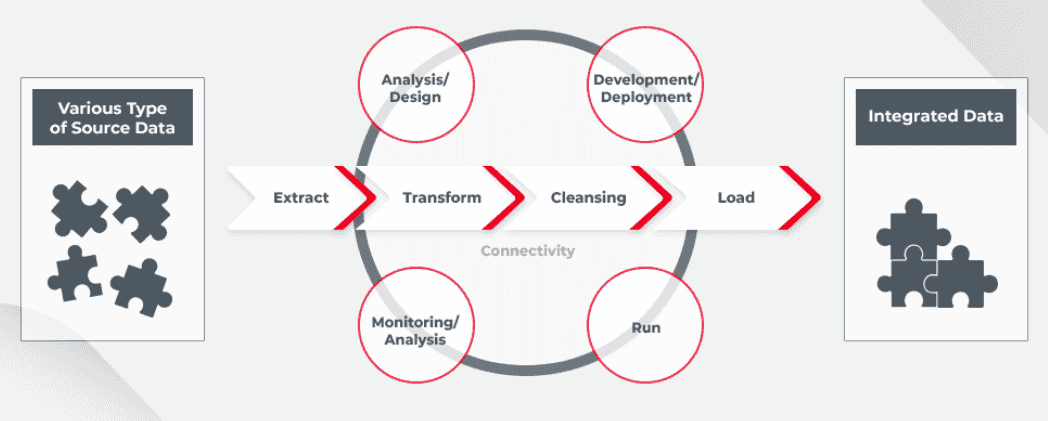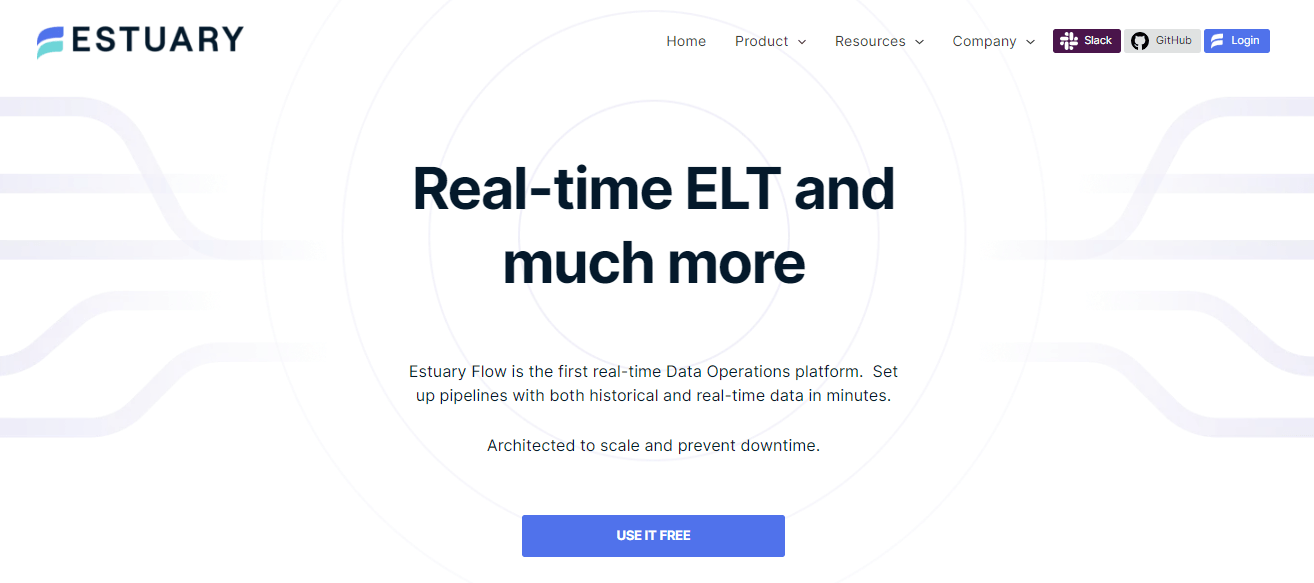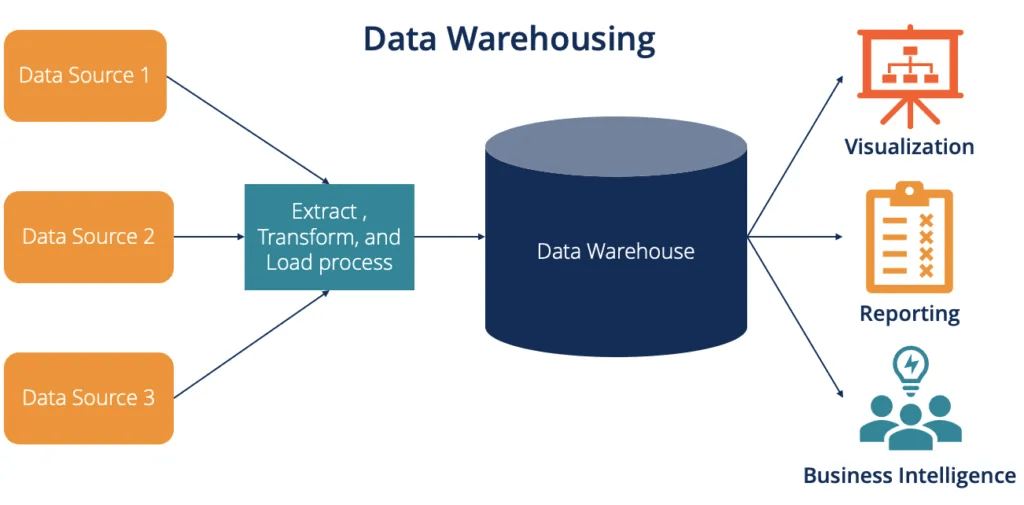
How do I break down data silos? How can I ensure data accuracy and consistency across platforms? What strategies can I adopt to make data work for my business ecosystem? These questions probably cross your mind more often than not. But, once you know the benefits of data integration and have ace strategies up your sleeve, you can put these questions to rest.
Today, companies are receiving data from various sources, including traditional databases, cloud applications, and IoT devices. Every byte of information is a potential competitive edge. Data integration is the only way to make sense of all this data and get the most out of it. Just to give you an idea, 80% of business operations leaders view the benefits of data integration as critical to their success.
But what exactly are the tangible benefits of combining data across fragmented systems? That’s what we’ll answer in today’s guide. We’ll explore what value data integration brings to your business and cover the tools and strategies you can use to transform your operations.
What Is Data Integration?
Data integration is a process in which all the data from different sources is combined into a unified view to provide you with timely, reliable insights. It extracts data, connects it, consolidates it, and loads it into a target repository after transforming it into a standardized format. This unified, consistent data enables seamless access to business intelligence, analytics, and decision-making.
With data distribution and volumes increasing day by day, manual integration is impractical. You need scalable automated data integration tools to integrate heterogeneous data sources like relational databases, CRM systems, IoT platforms, cloud applications, and social media APIs. Quality integrated data lets you use valuable data assets to increase productivity and improve efficiency.
Key Benefits Of Data Integration
Integrating data brings a whole lot of benefits to businesses. Here are the top 11 benefits that highlight why organizations are prioritizing enterprise data integration in their operations:
- Better data quality
- Cost savings
- Better decision-making and collaboration
- Improved efficiency
- Higher quality customer experiences
- Increased revenue streams
- Improved data accessibility
- Stronger data security
- Seamless data sharing
- Increased agility
- Unified data governance
Let’s look at these key benefits in more detail:
Better Data Quality
Quality is a byproduct of integration. A uniform data system promotes consistency, reduces the chance of duplicate records, and offers a more reliable set of information. With systems in place to validate and verify data, you have access to a trusted set of data records which can significantly increase confidence in decision-making processes.
Cost Savings
Automating manual tasks with the help of data integration cuts down on labor expenses. The time that was once consumed by these everyday tasks can now be redistributed to make the most of your staff's efficiency.
When you consolidate data into a unified system, it trims down the expenses linked to operating and maintaining multiple databases. This reduces costs across system licenses, infrastructure, and even staff training.
Better Decision-Making And Collaboration
Merging various data sources gives you a detailed view of how your organization runs. This big-picture view makes it easier to identify emerging trends and new opportunities for smarter decisions along the way.
For instance, when retailers combine their point-of-sale, inventory, and customer relationship data, they get a clearer understanding of sales metrics, customer preferences, and the effectiveness of marketing campaigns.
Improved Efficiency
Automating manual workflows like data entry, cleansing, and reconciliation with data integration tools significantly improves productivity. These integrated systems simplify tasks and reduce duplicated work for more efficient use of resources. Employees spend less time on repetitive, low-value tasks and can dedicate more time to high-impact work that moves the business forward.
Higher Quality Customer Experiences
The data integration process gives a unified customer view to provide highly tailored, personalized recommendations and offers to the users. Support teams can access integrated customer records from all channels and touchpoints to rapidly resolve issues and complaints.
For example, retail banks can provide consistent omnichannel experiences across online, mobile, call center, and in-person interactions with real-time data integration.
Increased Revenue Streams
With a fully integrated data system, you are better positioned to uncover hidden opportunities. This could be in the form of new products, services, or even previously untapped markets. The kind of insights you gather through regular data analysis has the potential to open up new and inventive sources of revenue.
Consider how banks use user behavior data to create hyper-personalized offers for increased customer engagement.
Increased Data Accessibility
A major perk of integration is the democratization of data. Any team member can retrieve and understand standardized data formats without getting help from IT. This independence promotes self-driven analytics, enhances teamwork on projects, and creates an environment where decisions are data-backed.
Stronger Data Security
A centralized data platform offers a higher security degree. With all data housed under one roof, it’s easier to implement and manage strict security protocols. Detailed access controls and monitoring mechanisms can effectively prevent unauthorized access and data breaches. This integrated approach to security also makes regulatory compliance straightforward.
Seamless Data Sharing
Data integration makes data sharing between different systems and platforms flow effortlessly. This enhances collaboration, supports accurate decision-making, and reduces data silos. Teams from different departments can access and use synchronized data to optimize performance.
Increased Agility
Data integration gives organizations increased agility to rapidly adapt to internal or external changes. This flexibility becomes a competitive edge, letting businesses stay nimble in the face of market shifts and make strategic turns based on valuable insights. They can use data integration to adjust their offers based on real-time user feedback, maintaining an edge in a dynamic market.
Unified Data Governance
When you consolidate data into a single, integrated platform, it gives you a foundation to centralize data governance policies and procedures. This makes it easier to apply uniform standards globally for security, privacy, metadata management, master data quality, and compliance. Integrated reporting and analytics help measure and maintain data management discipline.
This covers what the benefits of data integration are, but not how to implement it or how it works in practice. Let’s explore some of the ways to integrate data and what’s actually involved in the process.
Estuary Flow: The Efficient Choice For Data Integration
Estuary Flow is our ETL tool designed for streamlined data migration and integration. Using real-time streaming SQL and Typescript transformations, it easily connects relevant data from different cloud platforms, databases, and SaaS applications using efficient data pipelines.
Emphasizing user-centric controls, Estuary Flow maintains data quality and consistency during integration and bridges the gap between traditional systems and modern hybrid cloud setups.
Flow is budget-friendly, offering flexible pricing plans to suit your needs and your budget. There is also a free plan available for up to two tasks, with the option to choose from a variety of sources and destinations.
Let’s see what makes Estuary Flow different from other data integration platforms:
- Real-time CDC: Supports incremental data loading to optimize integration performance.
- Safety protocols: In-built measures prevent unauthorized access while prioritizing data quality.
- Global schema queries: Facilitates the efficient retrieval of integrated data from various data sources.
- Efficient data management: Real-time ETL capabilities handle different data formats and structures.
- Integrated connectors: Over 100 pre-built connectors that help in pulling data from different sources.
- Security measures: Uses encryption, authentication, and authorization to protect the integration process.
- Comprehensive customer views: Real-time insights are enriched with historical data for customized interactions.
- Legacy system connectivity: Smooth transitions between traditional and modern hybrid cloud setups are facilitated.
- User control & precision: Built-in schema controls to maintain data quality and consistency throughout integration.
- Automated operations: Autonomous schema management and data deduplication streamline processes and reduce redundancy.
- Expandability: A distributed system handles Change Data Capture (CDC) up to 7GB/s, adjusting to fluctuating data volume needs.
Data Integration Strategies To Transform Operations
Depending on the scope, needs, and resources of your business, you can use different strategies. Here are the 5 most used strategies to help you with data management.
Manual Data Integration
Manual data integration is a hands-on approach where engineers create specific scripts, jobs, and code to connect various systems and applications. Through this method, teams design customized solutions in tune with specific needs. Engineers extract data from source databases and application programming interfaces (APIs). This raw data then undergoes rigorous transformation to match the structure and format specifications of the target system.
Benefits
- Granular control: Custom-built processes match the integration requirements with high specificity.
- Cost-effectiveness: For small-scale, singular data migrations, manual integration can be more economical.
Drawbacks
- Reusability issues: Scripts made for one purpose often lack versatility for other tasks.
- Scalability concerns: Manual integration struggles as data volume or system numbers increase.
- Time-consuming: The hands-on nature makes it time-intensive, especially with complex data structures.
Use Cases
Specific integrations, singular data transfers, and initial proofs-of-concept.
Middleware Data Integration
Middleware functions as an intermediary layer that integrates different applications and systems. It connects legacy setups to newer systems and manages the entire data workflow. Middleware helps in transformations and handles potential data flow issues with built-in tools and services.
Benefits
- Interconnectivity: Eases the process of linking different systems.
- Automation edge: Routine tasks like data translation and delivery are automated for better efficiency.
Drawbacks
- Performance issues: Given its central role, middleware can affect overall system performance.
- Management overhead: Middleware solutions often need dedicated teams for upkeep.
Use Cases
Bridging the gap with cloud-based solutions and modernizing legacy systems.
API-Based Data Integration
APIs or Application Programming Interfaces are standardized pathways that facilitate data exchange between different systems. In API-based integration, data isn’t moved; instead, direct live data access is given. This approach helps in swift and efficient integrations.
Benefits
- Real-time access: Direct access to live data promotes immediate synchronization.
- Scalability: APIs, especially RESTful ones, are inherently scalable which makes them best suited for cloud-based integrations.
Drawbacks
- Reduced control: Using APIs might compromise certain synchronization aspects.
- Dependency on third parties: Heavy reliance on external APIs introduces risks especially when it comes to stability.
Use Cases
Integrating SaaS platforms, synchronization between various cloud services, and enhancing interoperability.
Data Virtualization
This data integration strategy focuses on creating a virtual representation of data from various sources. Data stays in its original location but is accessible through a virtual layer. This layer interacts with underlying sources in real-time for timely and efficient data retrieval.
Benefits
- Holistic view: Offers a consolidated, real-time view of data across various sources.
- Cost and time efficiency: Eliminates expenses and delays associated with physical data transfers.
Drawbacks
- Enrichment limitations: The virtual nature can be challenging for data enhancement.
- Operational strains: Constant real-time querying can strain the primary data sources.
Use Cases
Real-time reporting across different systems and lightweight data access for analytics.
Data Warehousing
A data warehouse acts as a central repository that gathers and refines data from different sources. Once fetched, the data undergoes validation and transformation through ETL processes to align with the warehouse’s schema, prepping it for in-depth analytics and reporting.
Benefits
- Quality data: Warehousing provides clean, consistent, and refined data.
- Performance boost: Dedicated infrastructure helps in quick querying, isolated from transactional databases.
Drawbacks
- Sync delays: The batch nature of updates might introduce synchronization lags.
- Resource intensive: Establishing and maintaining data warehouses can be costly.
Use Cases
Foundation for business intelligence, in-depth analytics, and regulatory reporting requirements.
3 Inspiring Data Integration Case Studies To Consider
Let’s discuss 3 real-world examples that show how leading organizations across sectors implemented data integration to transform operations and increase efficiency.
Case Study 1: Honda UK Manufacturing
Honda UK Manufacturing wanted to improve communication with its dealer network. A major issue was the 200 dealer management systems (DMS) that their dealers used. These DMSs created a disjointed environment as each had its unique design, coding standards, business rules, and data export capabilities.
This complexity hindered swift communication and made data sharing across the network difficult. After nearly a decade of wrestling with this issue, Honda realized it was high time for a unified data integration solution.
Solution
To address the data integration issue, Honda initiated 2 projects:
- Service invoice and used car sales: The goal was to streamline service invoice data and conduct a customer satisfaction survey post-sale while producing service reminder notifications for all UK dealerships.
- Automatic parts replenishment: This transmitted data from dealers to Honda's Automated Planning System (APS) located in Brussels. The purpose was to analyze current inventory levels at dealerships against past sales and then auto-generate orders for parts based on anticipated demand.
For effective data integration, Honda channeled data from its dealers to a dedicated server. Here, the data underwent a process of validation and integration with Honda’s core data. Post-integration, the consolidated data set was relayed back to Honda to generate insights and trigger service reminders.
Outcomes
The strategic data integration initiatives gave Honda:
- Accelerated data-driven dealer integration.
- Optimization of supply chain processes through integrated data streams.
- Enhanced customer satisfaction because of seamless data insights and interactions.
- Robust dealer communication strengthened relationships and created superior dealer services.
Case Study 2: CobaltRx
CobaltRx is a well-known name in the pharmacy benefit management (PBM) sector. It provides consulting and auditing services for prominent pharmacy benefit plan sponsors. However, as CobaltRx’s footprint increased, issues appeared.
Their predominant issue was relying heavily on manual processes and constantly dealing with disorganized and mismatched data. Although they recruited external contractors, daily data challenges were still there. The existing tools they used to manage data normalization and storage needed regular technical input even for the smallest of changes.
Solution
After a detailed evaluation, CobaltRx found out that they were not fully using their technological capabilities and were stuck in unnecessary complexities. A simplified strategy was then implemented:
- The existing setup was overhauled and paired with a generic database system for storing data and a visualization tool for creating in-depth reports.
- This new combination provided a smoother data management process, a repository of refined data, and an easy mechanism to analyze details as required.
- Consultants at CobaltRx could autonomously manage files and implement changes without the constant need for technical mediation.
Outcomes
Using this streamlined solution resulted in many benefits, like:
- Improved operational profits helped CobaltRx in pricing negotiations for new projects.
- With readily available data, consultants increased their workflows and improved service quality for clients.
- Major cost reductions as unnecessary software expenses were reduced and dependence on external technical support was brought down.
Case Study 3: Bayer Crop Science
As its technology platform grew vast and complex, Bayer Crop Science came across several challenges. The integration was heavily dependent on custom point-to-point (P2P) connections which proved to be not only difficult but also costly. This made accessing data from isolated systems a difficult task and hindered important operations like product development.
Solution
The solution they chose was based on API-led connectivity. This is how Bayer transitioned from P2P to this new approach:
- They integrated their sales and customer service platforms using API-led connectivity, discarding the old P2P model. With this, Bayer could pull data from previously isolated systems and get a unified view of all customer data.
- One practical application of this was syncing service cases across different platforms. This synchronization allows support teams to access accurate data and improve customer service quality.
- The adoption of platform-as-a-service components meant Bayer's team could concentrate on creating more APIs instead of getting stuck in earlier integration challenges.
Outcomes
This is how Bayer benefited from API-led connectivity:
- Product development time was reduced from 5-6 weeks to 2 weeks.
- Introduction of over 40 reusable APIs streamlined development and saved costs.
- Maintenance and support costs decreased, with a 70% reduction in process functions.
The Takeaway
The benefits of data integration are far-reaching – reshaping how modern enterprises channel information. This isn't just about bytes and databases. It's about seizing the power within your data and converting it into a catalyst for innovation, growth, and strategic decision-making. The days of scattered, fragmented information are behind us; the era of data integration is now.
To unlock data integration’s full potential and accelerate time to value, use our enterprise-ready integration platform – Estuary Flow. Its real-time ETL engine, 200+ pre-built connectors, and scalability to 7GB/s make it a future-proof solution.
Get Flow today to experience seamless data integration. Try it out for free or talk to us for more information.

About the author
With over 15 years in data engineering, a seasoned expert in driving growth for early-stage data companies, focusing on strategies that attract customers and users. Extensive writing provides insights to help companies scale efficiently and effectively in an evolving data landscape.














